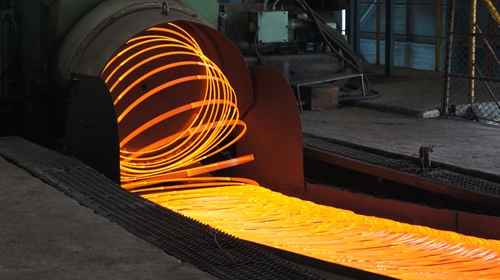 Economy
Economy

At a time when sustainable economic development is more important than ever in Việt Nam, experts urged that supervision be tightened to ensure the economy grows on the right track.
 |
| Steel being manufactured. Experts said the steel industry is essential for Việt Nam’s progress in industrialisation. - steelvps.com |
HÀ NỘI – At a time when sustainable economic development is more important than ever in Việt Nam, experts urged that supervision be tightened to ensure the economy grows on the right track.
The coastal pollution disaster caused by the Taiwan-owned steel factory Hưng Nghiệp Formosa Hà Tĩnh Steel Corporation rang alarm bells for the lower middle income country regarding its development options.
Prime Minister Nguyễn Xuân Phúc has repeatedly emphasised that Việt Nam not trade off environmental integrity for economic growth. But challenges remain for the developing nation to harmonise economic growth and environmental protection successfully.
The country’s growth model, institutional reforms and transparency are even bigger challenges which still remain.
Việt Nam is still in the process of industrialisation. The gross domestic product per capita is only equivalent to 30 per cent of the world average, while environmental pollution already causes significant concern, experts said at a VnEconomy conference on Tuesday.
The market mechanism was good, said economic expert Võ Trí Thành, but it was not sufficient to resolve problems related to the environment and sustainable development.
Economic growth and environmental production must be linked together, Thành said. “It is not the story for today only but for the future.”
The Director of the Việt Nam Institute for Economics, Trần Đình Thiên, said it was essential to transform the growth model and that attracting foreign investment should not merely rely on the provision of incentives.
"The growth model of the past five years hardly improved confidence in the sustainable development of the Vietnamese economy," Thiên said.
“Lessons learned from Formosa are opportunities for Việt Nam to push reform” said Nguyễn Thế Chinh, Director of the Institute of Strategy and Policy on Natural Resources and Environment. Reform would need joint efforts, Chinh said, adding that the effort of just a single ministry alone would not work.
Need for clean steel
Experts agreed that the steel industry was essential for Việt Nam to achieve its industrialisation goals.
After the Formosa pollution episode, the question of whether or not the country should continue to develop the steel industry was hotly debated.
“Yes, for the country to move towards industrialisation,” said Hồ Nghĩa Dũng, president of the Việt Nam Steel Association.
Dũng cited statistics showing that the steel consumption of Việt Nam averages 200 kilograms per head per year - lower than the world average of 240 kilograms. Meanwhile each industrialized country had an average steel consumption of 500-600 kilograms per head per year.
To meet its needs, Việt Nam imports steel worth billions of dollars each year, an expense for which the developing nation must budget.
The country must also continue to improve the supervision of steel production to control its impact on the environment, yet another expensive undertaking.
According to Thành, steel appeared to be an appropriate choice for Việt Nam, considering the country’s economic development level and advantages.
Trương Thanh Hoài, Director of the Heavy Industry Department under the Ministry of Industry and Trade, said the impacts of steel production on the environment could be controlled. As examples, Hoài cited Japan and Korea, where fishing near steel plants was still considered safe.
Experts urged tighter State supervision, coupled with supervision of the community. - VNS




